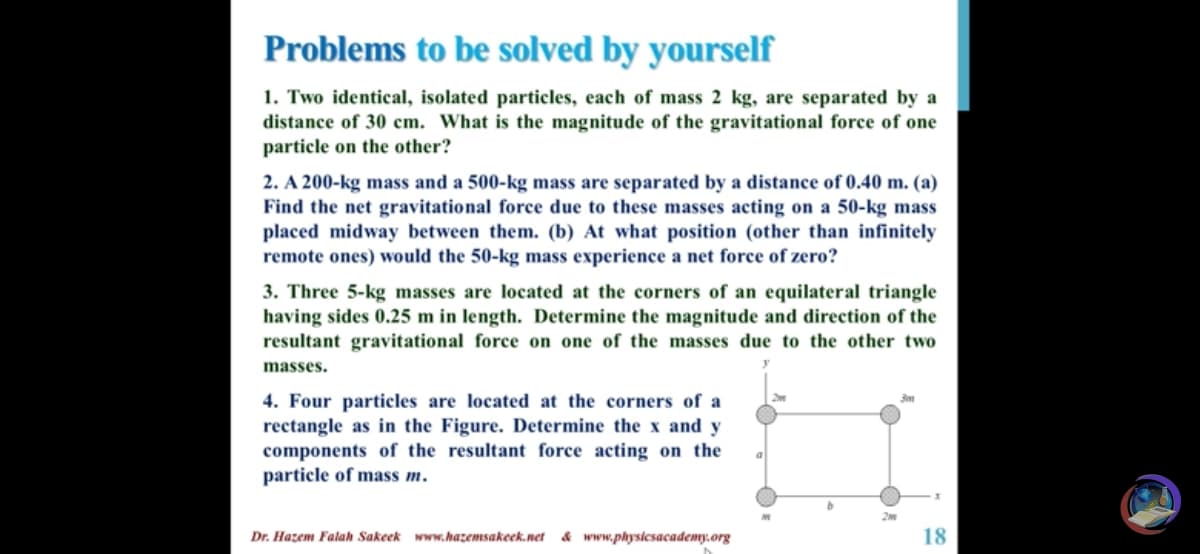1. Two identical, isolated particles, each of mass 2 kg, are separated by a distance of 30 cm. What is the magnitude of the gravitational force of one particle on the other?
1. Two identical, isolated particles, each of mass 2 kg, are separated by a distance of 30 cm. What is the magnitude of the gravitational force of one particle on the other?
Classical Dynamics of Particles and Systems
5th Edition
ISBN:9780534408961
Author:Stephen T. Thornton, Jerry B. Marion
Publisher:Stephen T. Thornton, Jerry B. Marion
Chapter10: Motion In A Noninertial Reference Frame
Section: Chapter Questions
Problem 10.7P
Related questions
Question
100%

Transcribed Image Text:Problems to be solved by yourself
1. Two identical, isolated particles, each of mass 2 kg, are separated by a
distance of 30 cm. What is the magnitude of the gravitational force of one
particle on the other?
2. A 200-kg mass and a 500-kg mass are separated by a distance of 0.40 m. (a)
Find the net gravitational force due to these masses acting on a 50-kg mass
placed midway between them. (b) At what position (other than infinitely
remote ones) would the 50-kg mass experience a net force of zero?
3. Three 5-kg masses are located at the corners of an equilateral triangle
having sides 0.25 m in length. Determine the magnitude and direction of the
resultant gravitational force on one of the masses due to the other two
masses.
4. Four particles are located at the corners of a
rectangle as in the Figure. Determine the x and y
components of the resultant force acting on the
particle of mass m.
Dr. Hazem Falah Sakeek www.hazemsakeek.net
& www.physicsacademy.org
18
Expert Solution
This question has been solved!
Explore an expertly crafted, step-by-step solution for a thorough understanding of key concepts.
This is a popular solution!
Trending now
This is a popular solution!
Step by step
Solved in 2 steps with 2 images

Knowledge Booster
Learn more about
Need a deep-dive on the concept behind this application? Look no further. Learn more about this topic, physics and related others by exploring similar questions and additional content below.Recommended textbooks for you

Classical Dynamics of Particles and Systems
Physics
ISBN:
9780534408961
Author:
Stephen T. Thornton, Jerry B. Marion
Publisher:
Cengage Learning

Glencoe Physics: Principles and Problems, Student…
Physics
ISBN:
9780078807213
Author:
Paul W. Zitzewitz
Publisher:
Glencoe/McGraw-Hill

Classical Dynamics of Particles and Systems
Physics
ISBN:
9780534408961
Author:
Stephen T. Thornton, Jerry B. Marion
Publisher:
Cengage Learning

Glencoe Physics: Principles and Problems, Student…
Physics
ISBN:
9780078807213
Author:
Paul W. Zitzewitz
Publisher:
Glencoe/McGraw-Hill